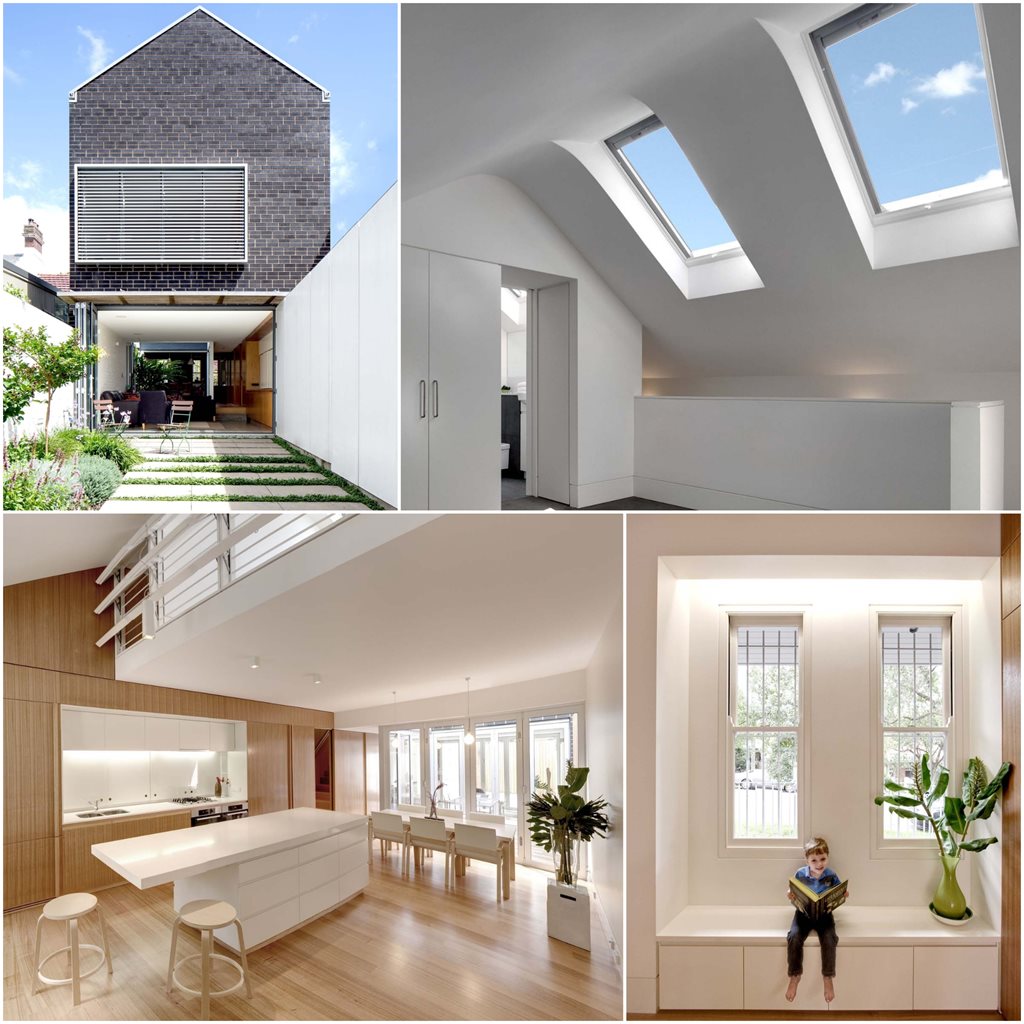A Stanmore terrace house was transformed from a run-down drug den to a contemporary, light-filled and sustainable family home.
From the architect:
From drug den to good neighbourhood home. Some places just feel scary and unloved. This terrace house in the Inner West of Sydney was previously one of those spaces. Unwanted occupants, both human and pests, had reigned before KGA was engaged to transform what was left of the house into a warm and welcoming family home.

Before

After
The new home was to be a space that was not confined, unlike most other terrace dwellings in Sydney. The owners wanted space and a feeling of openness throughout. The question was raised whether the clients should renovate or demolish and start from scratch. As the existing building had been damaged by termites and sustained years of neglect, the structure could not be reused and all the timber had to be replaced.
In addition, the brick and mortar was of questionable quality, so it was decided for a limited renovation to maintain the traditional details at the front, retaining some of the existing walls and recycling the bricks. A balance was struck with using the embodied energy and providing something that would be useful hopefully for a long time into the future.
SUSTAINABILITY FEATURES
Solar access
The existing two-storey house built to the northern boundary overshadowed much of the site. To maximise solar access of the east-west orientated site and maintain solar access for the southern neighbour, we built along the northern boundary. The two building volumes are linked around a central court that corresponds with the southern neighbour's living area, allowing solar access to both sites.
The rear volume was made tall rather than long to minimise the overshadowing on the southern neighbour’s rear living spaces. Breaking up the volume allowed us to control solar access to all major spaces.
Cross-ventilation
Excellent cross-ventilation is achieved by having relatively short volumes with ventilation paths both horizontally and vertically. Louvre windows and bi-folding doors make it possible to completely open the space.
Thermal mass
Internal insulated thermal mass is incorporated into areas that receive direct sun in winter, allowing for the storage of heat in the burnished concrete floor and in the recycled brick walls. In summer the shading ensures the same thermal mass assists with cooling the space
Compartmentation
Heating and cooling is assisted by allowing the building to be compartmented. During summer when cooling is desired, the whole house can be opened to allow a free flow of air both horizontally and vertically. The stack effect allows the hot air to rise and exhaust out the top through skylights. In winter the spaces can be closed, so that each space can be individually heat-controlled.
Active systems
The use of active systems was limited, with focus on passive methods for controlling comfort and energy use. No air conditioning system is required, however the natural stack effect is assisted through a series of low energy fans connected to thermostats to assist with exhausting hot air out of the house. Ceiling and wall fans are provided in all bedrooms.
Water
A 3000L water tank is concealed in the storage in the rear yard and serves all toilets, washing machine and garden taps.
Insulation/openings
High R-value insulation is used throughout the house, including insulating the new double brick walls. Living room and bedroom openings have been designed with blinds or curtains. A curtain rail around the courtyard is designed to sit against the ceiling, limiting and containing the radiation from the doors in winter.
Lighting
An important lighting decision was to maximise the use of natural day light where possible. The only room without a window is the downstairs toilet. No artificial lighting is required at daytime, with low energy lights and task lights provided at night.


